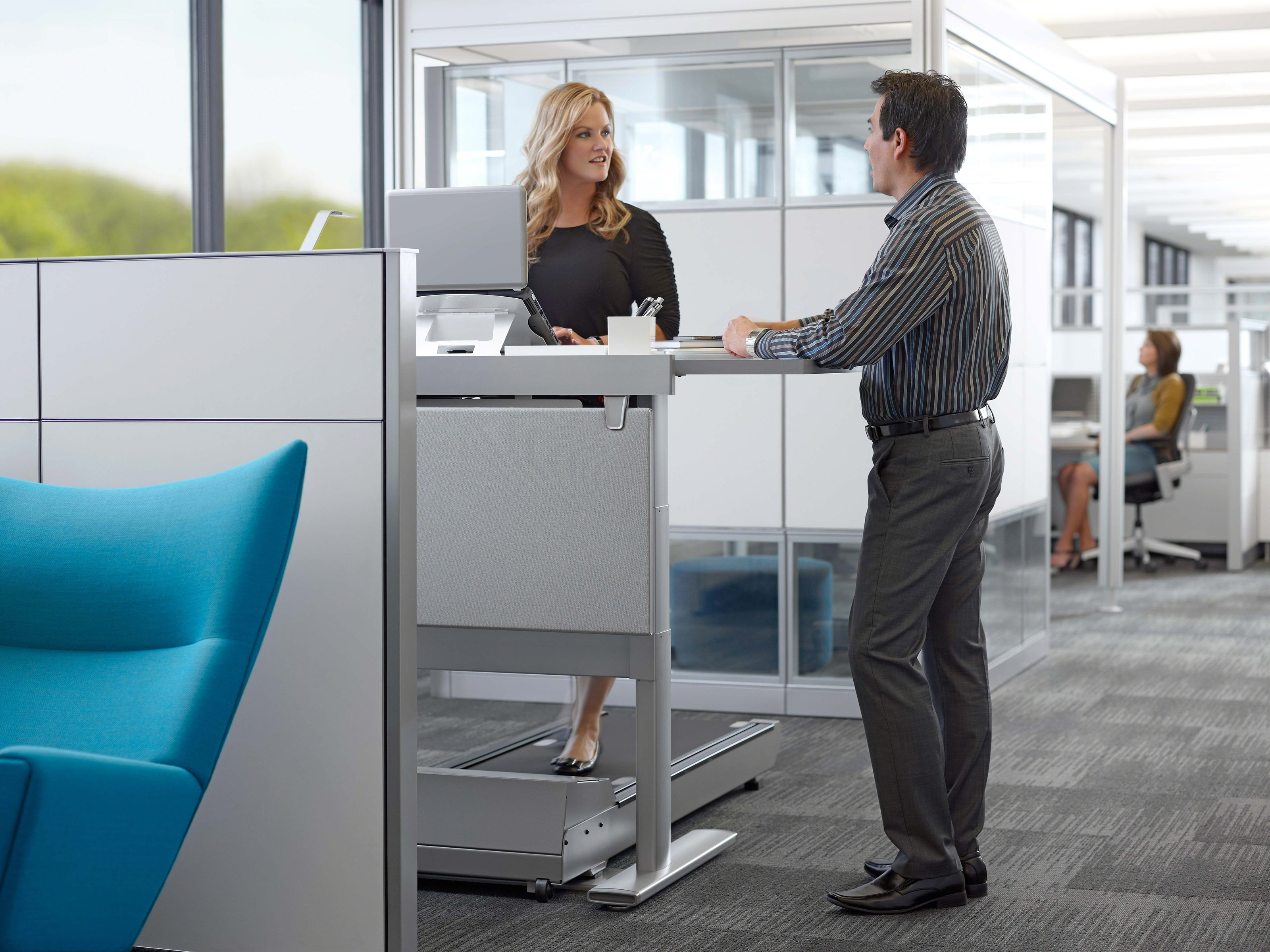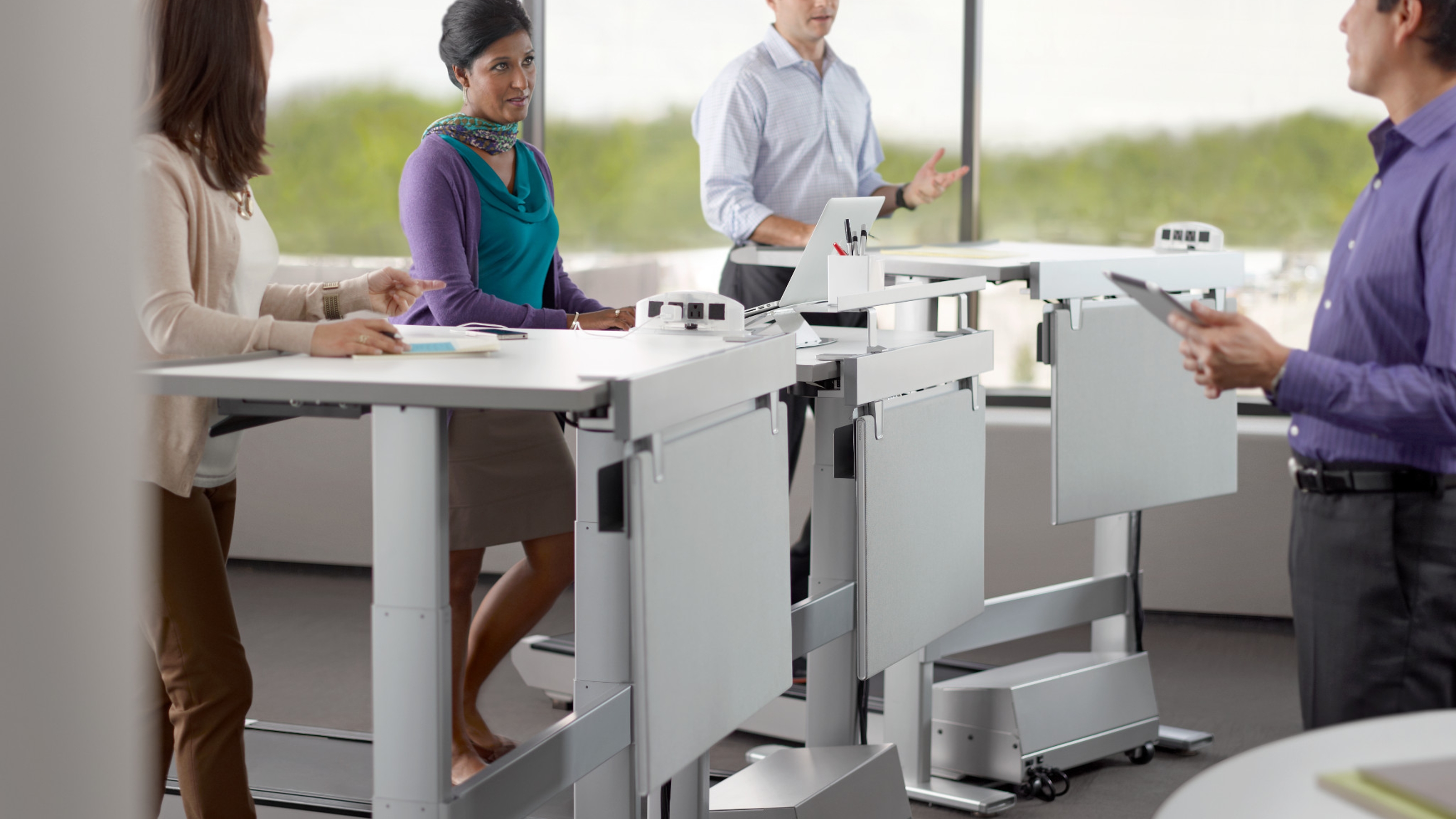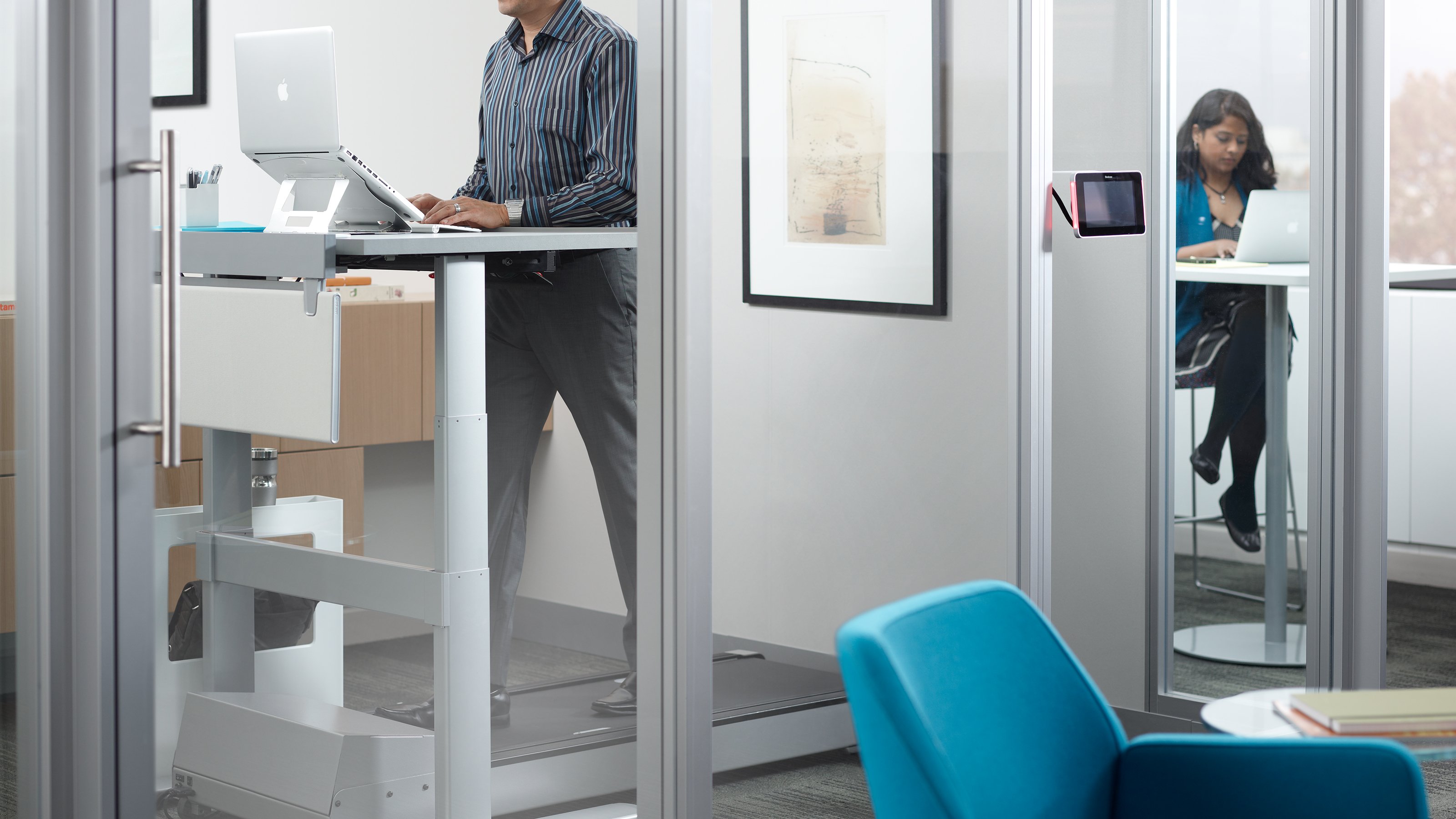The treadmill desk has become a much touted and fashionable solution to a sedentary work life in recent years. Celebrities like Victoria Beckham and Joanna Coal have both taken to social media to trumpet its benefits, while countless publications including the Hollywood Reporter have profiled its adoption by the stars.
But, what's the truth about its potential impact on engagement, health and wellbeing at work? Is there evidence that it can really help the rest of us?

There is now a sizeable body of scientific (and anecdotal) evidence about the contribution this kind of equipment can make  to employee wellbeing - with many studies offering different assessments of its benefits.
to employee wellbeing - with many studies offering different assessments of its benefits.
Still, at least most would question the wisdom of working and running on a treadmill while wearing killer heels.
But what does the research say are the real pros and cons of using treadmill desks?
Impact on productivity
It can take time for workers using treadmill desks to become properly accustomed to them.
A study by Cornell University shows that writing and typing while running or walking (at least to start with) can be a challenge. Another study by an American university found cognitive abilities actually deteriorated during subject's use of the equipment.
“By devoting a portion of their thinking to keeping themselves balanced on the treadmill" the scientists concluded, "workers became marginally less able to reason and remember.”
More long term research has concluded that this problem is corrected over time - and the use of these desks can, in fact, make a palpable difference to performance:
A year long study of finance workers at a company in St. Paul, Minnesota found that the productivity of 40 treadmill desk users dipped at first as they struggled to master typing and manipulating a mouse. But four to sixth months later, all three measures of performance—quality and quantity of work, and the quality of interactions with colleagues—rose steadily.
Impact on physical health
The results of a controlled and randomised study published in The Lancet last year concluded that the installation of treadmill desks could also positively impact physical health.
Participants in this study were found to move more frequently than those using traditional or sit/stand desks, contradicting previous reports that workers were more likely to simply give up using treadmill desks effectively once their novelty had worn off.
The doctors who conducted this research suggest real health benefits can accrue to those who are able to consistently use the equipment while they work.
Is it a practical workplace solution?
In spite of all this, the practicality of the solution, particularly if you are thinking about equipping an entire workforce, may be doubtful.
Treadmill desks can be bulky, noisy and distracting for others. They are also relatively costly and need specialist maintenance to keep in good working order.
Heavy and difficult to move or store, they are a far cry from the modular and quick to assemble furniture solutions that are increasingly a feature of modern offices fitted out for 'agile working'.

Treadmill desks as part of an ABW (Activity Based Working) design model
Having said that, many workplaces have successfully integrated treadmill desks into their spaces without disruption and with positive results.
Some offices choose to have a few treadmill workstations available for shared use as part of an ABW (Activity Based Working) strategy - reflecting the modern trend to offer a range of different environments that can support different kinds of working styles. After all, not everyone would or should choose to stand, run or walk on a treadmill all day, every day.
Jennie Fowler, interior designer at Hacker, an architectural firm working out of Portland, Oregon offers some good advice for those designing these shared spaces
- Desks should be placed in groups (or at least pairs) in order to better facilitate collaborative work
- Orientation should mitigate glare and other distractions
- Treadmills should face out of windows to help stimulate free thinking
- If the desks are in a public space, they should be positioned so that those using them feel comfortable and not 'on display' - some models of treadmill desk come with optional privacy screens for just this reason.

A more flexible future
Being able to use treadmill desks in the office can help make workers fitter, more engaged and more productive. But, supporting workplace wellbeing and engagement is increasingly being recognised as a more holistic undertaking.
Research is showing that workers want and expect more from their employers and their workplace than merely permission to run on the spot.
There are more profound shifts happening in our attitudes towards the way we spend our working days, than the simple desire to shake off sedentary habits.
Beyond the treadmill desk
Reflecting on the future of her treadmill desk Jo Coal, one time editor-in-chief of Cosmopolitan remarked:
"I think in 10 years' time, we'll all look back on the office life where we were all sitting in chairs all day and think, 'What were we thinking?'"
And this is true of many workers, particularly the younger generation of workers. But they're not imagining a future where they spend all day on a treadmill, either literally or metaphorically.
Instead, as all the research makes clear, they are imagining a future where they can work from anywhere at any time, where they can focus and collaborate with each other at will using a range of digital tools and in a range of settings.
The treadmill desk might simply be a distraction, as we move towards a future of total technological, physical and creative flexibility in the ways we choose to work alone and together.










